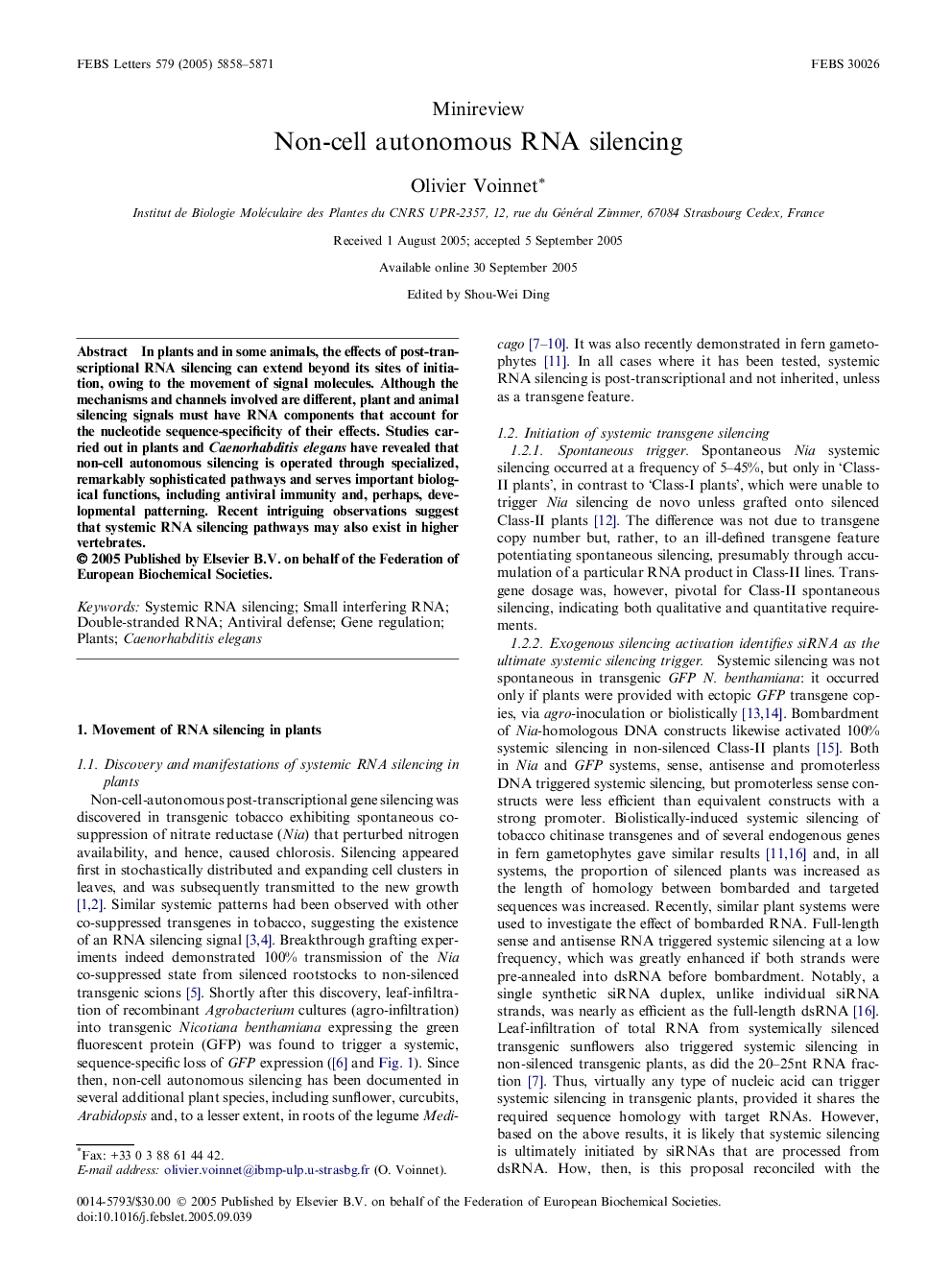| Article ID | Journal | Published Year | Pages | File Type |
|---|---|---|---|---|
| 2052133 | FEBS Letters | 2005 | 14 Pages |
In plants and in some animals, the effects of post-transcriptional RNA silencing can extend beyond its sites of initiation, owing to the movement of signal molecules. Although the mechanisms and channels involved are different, plant and animal silencing signals must have RNA components that account for the nucleotide sequence-specificity of their effects. Studies carried out in plants and Caenorhabditis elegans have revealed that non-cell autonomous silencing is operated through specialized, remarkably sophisticated pathways and serves important biological functions, including antiviral immunity and, perhaps, developmental patterning. Recent intriguing observations suggest that systemic RNA silencing pathways may also exist in higher vertebrates.
